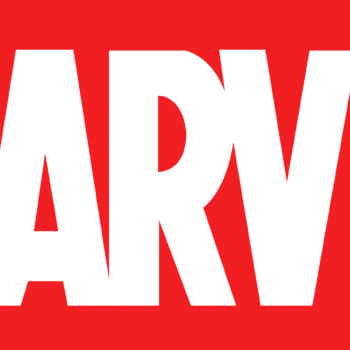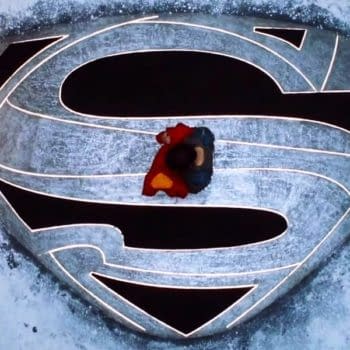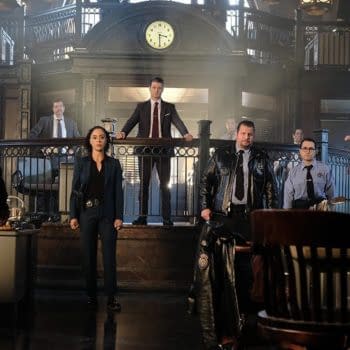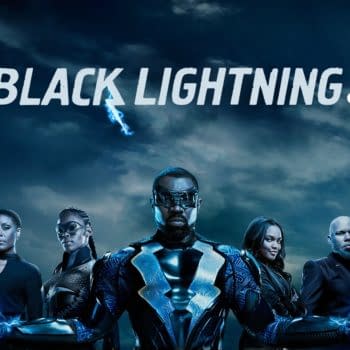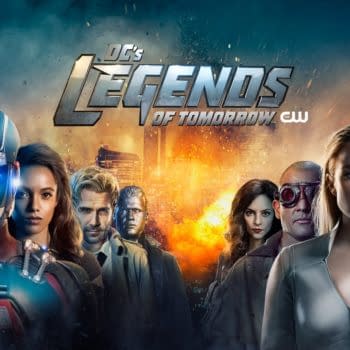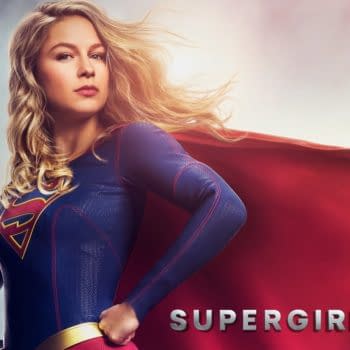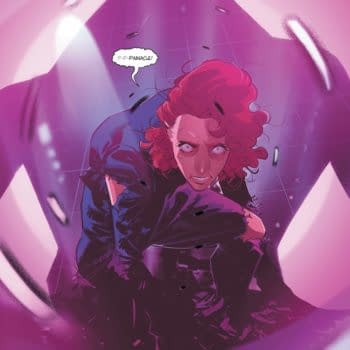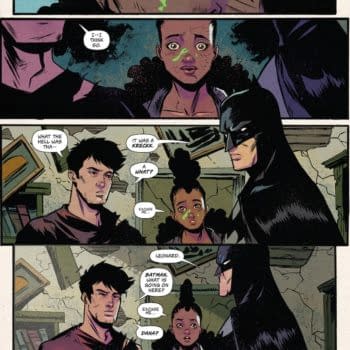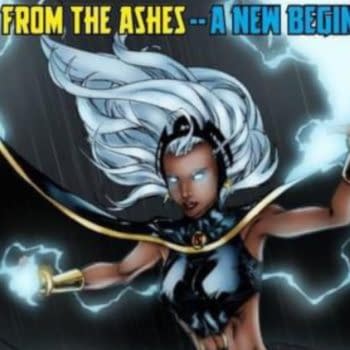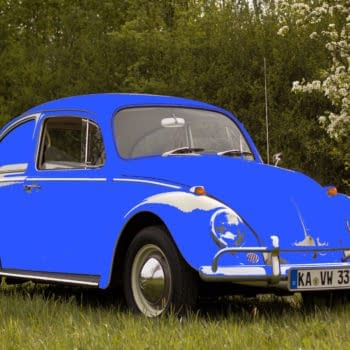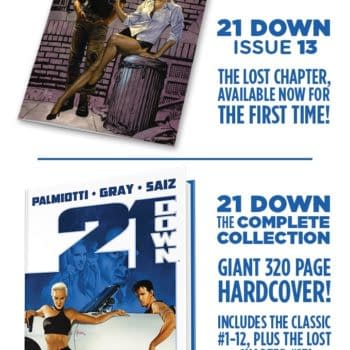Posted in: Comics | Tagged: Daily Grind, kickstarter, last resort, my little pony, Rachel Keslensky
What Has A Deadly Reality Show In Space, A Vampire Catgirl And A Pair Of Bleeding Cool Booty Shorts?
Rachel Keslensky writes for Bleeding Cool:

Coming up through the Atlanta convention scene, webcomics had always caught my fancy — I even decorated one of my earliest journals for high school with the pages of Real Life Comics (which I stopped reading ages ago, but what the hell, it was funny back then!), and Jennie Breeden earned my undying adoration while she was still sitting under the escalators at Dragon Con.
Even then, though, a couple things bothered me about the way comics worked:
- If a comic didn't update sporadically, it was a daily grind — so much so that the Daily Grind Iron Man Challenge started as a means of testing this between artists. This was fine, but the art suffered as a major consequence (if there was even any art to speak of)!
- RPG World, an old favorite of mine, ended suddenly towards what would've been the big dramatic climax of the story — with a weak excuse and a sputtering set of end-comics. The betrayal stung, then went away as I never came back. It wouldn't be the first time I noticed a comic just up and die without so much as an explanation, but it wasn't the last.
- Many comics seemed to be derivative retreads — if not of Marvel and DC's various strangleholds on the superhero genre, then various takes of Penny Arcade and "two guys on a couch". Even now I see "retro"-type comics that attempt to emulate that old 70's/80's Prince Valiant feel, and then see them wonder why they're not working when the answer lies in the fact they're sticking with a formula the public grew tired of three decades ago.
Most of my complaints cover everything that sites like How Not To Run a Comic already complained about, with one major exception: the kinds of stories I wanted to do? About women who didn't take no for an answer, epic tales made that way by epic worlds, and fantastic beasts, some of whom also made pretty kickass characters in their own right? Those didn't exist. Heck, they barely exist now.
And for those of you about to suggest "My Little Pony: Friendship is Magic" as an answer:
Right now, My Little Pony is THE token "show for girls" that anyone gives a damn about, and they should. Pretending that one single show that happens to include talking ponies that also happen to be female wipes away a generation of shows where men can be anything and women are just "the chick"? That's dumb.
"Friendship is Magic" is cool. It's awesome. It's colorful. LET'S MAKE MORE.
The first step towards building this idealized comic was to set a schedule and stick to that schedule, come hell or high water.
This isn't a hard concept: If you tell people stuff's going to be posted at a given time, you have something there for them to see. It doesn't have to be finished (though you should finish it ASAP). It doesn't have to be in continuity (though it helps!), and it doesn't even have to be done by you (though, again, you should check it for a minimum level of quality) The point is to have something worth the trip to the site, and if it's worth anything, people tend to like it and forgive whatever imperfections exist.
The added bolster to keep this schedule intact was to go ahead and decide from the start to run the comic as a business venture — not that it took much to keep me happy in the beginning, but a venture nonetheless. Traffic and 'popularity' were nebulous, hollow numbers — someone would always have more, tracking them had no appropriate response beyond trying to permanently 'improve' them — but money? Money was its own reward. Money cut through the bullshit anyone tried to start with "Well, yes, but does it actually do anything?" and "So what do you do for your REAL job?" (Hey, if it's on my LinkedIn profile, IT'S A JOB. Shut up.)
Honestly? As long as the money coming in was a nonzero, positive number, I was fine to start.
The second step was to make a world that stood well on its own, not merely because it "looked like" something else. Being similar was okay, looking like a knockoff was not. This is the great flaw of "Being different for the sake of being different" — without at least some basis to give people a foothold, they lose interest in trying to make sense out of it. This is why so many things are described as a combination of other things — "It's Die Hard, but on a bus!", "It's the love child of a jackrabbit and an antelope!", "It's like four iPhones taped together!" — because we know what those things are in the first place and can imagine the results for ourselves.

There's other elements borrowed here and there too — Sailor Moon's influence is hard to miss, and if anything it's been extrapolated to its logical conclusion — if you're going to have "sailor scouts" of alien worlds, why not have them be *actual freaking aliens* rather than having them all be conventionally pretty, thin, Japanese (white?) teenage girls in different colored sailor suits? — but the overall feel of all this is still unmistakable.
The third step? Knowing that evolution was inevitable and just starting on the comic rather than trying to perfect and predict everything in advance.
I knew from what I'd learned about "successful" webcomics (and there weren't many at the time!) that the main thing holding a lot of these comics together seemed to be sheer longevity — so I knew that if my comic was going to be anything close to successful, it needed a similar plan for lasting the next five, ten, or even twenty years. My original plans included a rough outline for twenty-five years (!) of content, even if it was all in terms of thinking about five-year arcs.
It required a different set of thinking — no pulling out within the first year just because I wasn't seeing results (and indeed, many places I attempted to court in that first year didn't even want to speak to me until I'd been posting regularly for six months!), building a site with the idea in mind that I'd be using it for a while, and most importantly — accepting that the kind of comic I produced to start (and the sort of comic I have now) don't have to be the same thing.
My plans have changed dramatically from where I started — from 4-koma-style vertical strips to full-page comics, from a five-year plan to three-year plans (and even from that three-year arc to breaking each volume down into "acts" that could be published annually!), a dramatically improved art style as the comic's morphed from hastily-scanned in scribbles that betray the early influences of Ratchet & Clank to clean, crisp characters drawn in Adobe Illustrator, some to the point that if they weren't the same color as their old selves you'd have a hard time realizing they were the same character.
The art evolution over seven years of the galaxy's fluffiest vampire
If anything has stayed the same, it's that the comic is still one continuous, ongoing story, even if that tale's morphed from its previously disjointed, soap-style storytelling into a more conventional protagonist-drives-the-story approach.
Last Res0rt is a sci-fi comic that manages to deliver a consistent update schedule while still telling a compelling ongoing story — in this case, the story in question is a slight twist on the "damsel in distress" trope, as both the damsel and her "rescuer" aren't what you'd expect at first blush: The damsel in question (Daisy) is well into her 50s, already has two kids, and if she wasn't hobbled by Veled before the show started (literally!), she'd probably be able to take care of the whole mess herself. Her rescuer (Jigsaw), is more at home on a concert stage than in combat, but feels obligated to help Daisy out anyway — even though half the time it's clear she's in over her head and needs Daisy's help. The two of them buddy up and work together on the program…
… at which point Daisy finds out Jigsaw's had an ace up her sleeve that Jigsaw didn't even know about — she's turning into a vampire, something previously thought impossible outside of humans but also driven into hiding — and quickly sets to work helping Jigsaw keep her secret so they can both escape the show alive.
Granted, all of this unfolds over the first dozen strips rather than a more direct telling — As more and more characters are introduced in the early pages, it's clear something's up between Daisy and Jigsaw, but not necessarily how, other than Jigsaw's decided to stick up for Daisy rather quickly — but at least part of the point with Last Res0rt is both that the original pages stay as they are, a record of both how the comic (and its story) evolved over time into what they are now.
The story's been unfolding at a rate of one page each week for the past seven — SEVEN! — years, with no signs of letting up in sight — hence the Kickstarter that's now winding down having hit my primary funding goal and then some.
You can read all the different articles you like about doing Kickstarters — and you should, especially if you need to be told things like "include a video, no matter how crappy you think it is" and "include pictures of the work you've done already so people know you're not a flake" — but the main predictor of whether or not you're going to succeed at Kickstarter?
The secret to success is whether or not you've already been successful in the past.
There's a reason a lot of the successful comics Kickstarters come from webcomics — if you already have a track record for producing reliable content on a shoestring budget and a built-in group of people who trust you, like you, and are willing to go to bat for you, you'll hit your goals fairly quick (or at least get far enough along in the first days that you can convince a few other folks to come along for the ride)! Sure, SOME funding will come in via Kickstarter itself, and a little more will come in from advertising and publicity efforts, but most of my funding has come from a set of fans that've earned the nickname "the heavy artillery" after everything they've done.
There's still a little time left — we're in the last couple days here — for those of you who are just now realizing this as of however long ago it took you to read the previous sentence and want to kick in a little bit extra. Whether you're interested in copies of the book or actually finding your way into pages of the next volume — and you can do both! — you'll need to act now before the opportunity pumpkins itself at Midnight EST on Sunday night / Monday morning.
And just for kicks:
One of the benefits of using Kickstarter is that it tells me where backers come from, whether they're from my own comic's site (and lots of people are!) or from Kickstarter, or a particularly well-placed ad. In other words, I can tell who donated after coming to the project from this article (well, Bleeding Cool in general, but since I imagine other people will be talking about their projects instead, I'm pretty sure anyone coming to there from here is going through this article).
If I get 5 backers (or $75 worth, if there's not that many backers) that Kickstarter tells me came from this Bleeding Cool article, I'll give Bleeding Cool a cameo of its own across Jigsaw's shorts — one well-placed logo across her buttcheek(s) for as many panels / pages as she wears that particular outfit. Heck, I'll even let that stack and include it on other characters for every 5 backers / $75 coming in from Bleeding Cool (and in the name of equal-opportunity fanservice, they won't just be on the girls — but it's Jigsaw's show, so she has to go first)!
In other words, enough $1 backers coming from Bleeding Cool could equal a whole lot of logos on booty shorts for the foreseeable future.
After all, if I'm going to go for the infamous butt shot, it may as well be for a good cause!
——
Rachel Keslensky writes, draws, and does just about everything else for Last Res0rt, which is currently offering up a killer Kickstarter to raise funds for printing Volume Two (and then some)! Once you're done checking it out, go ahead and follow her on Twitter and/or Facebook.




